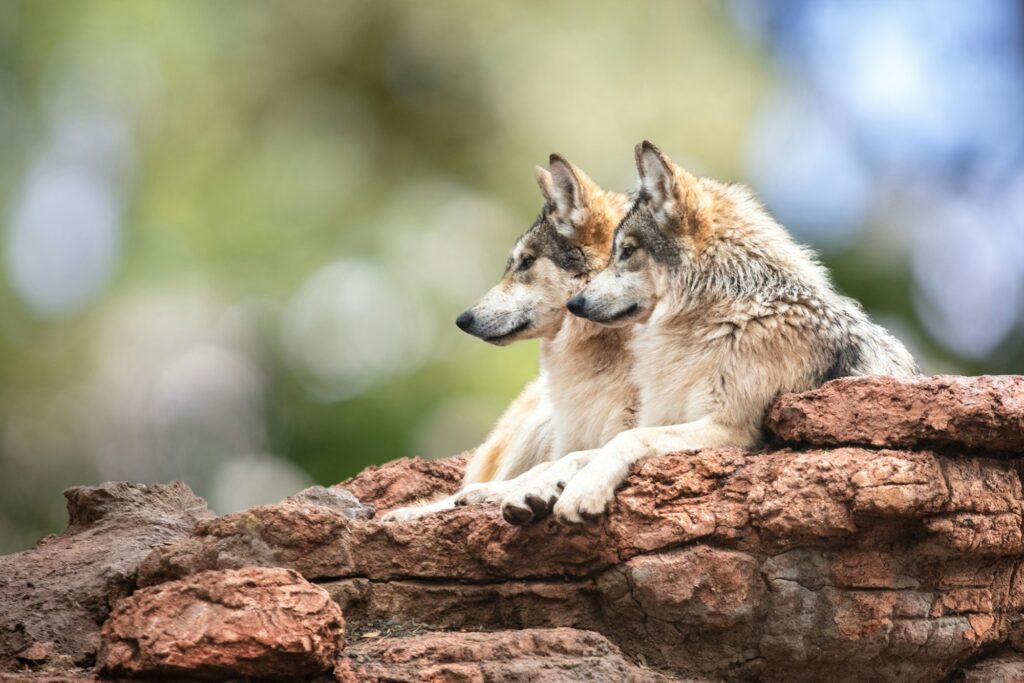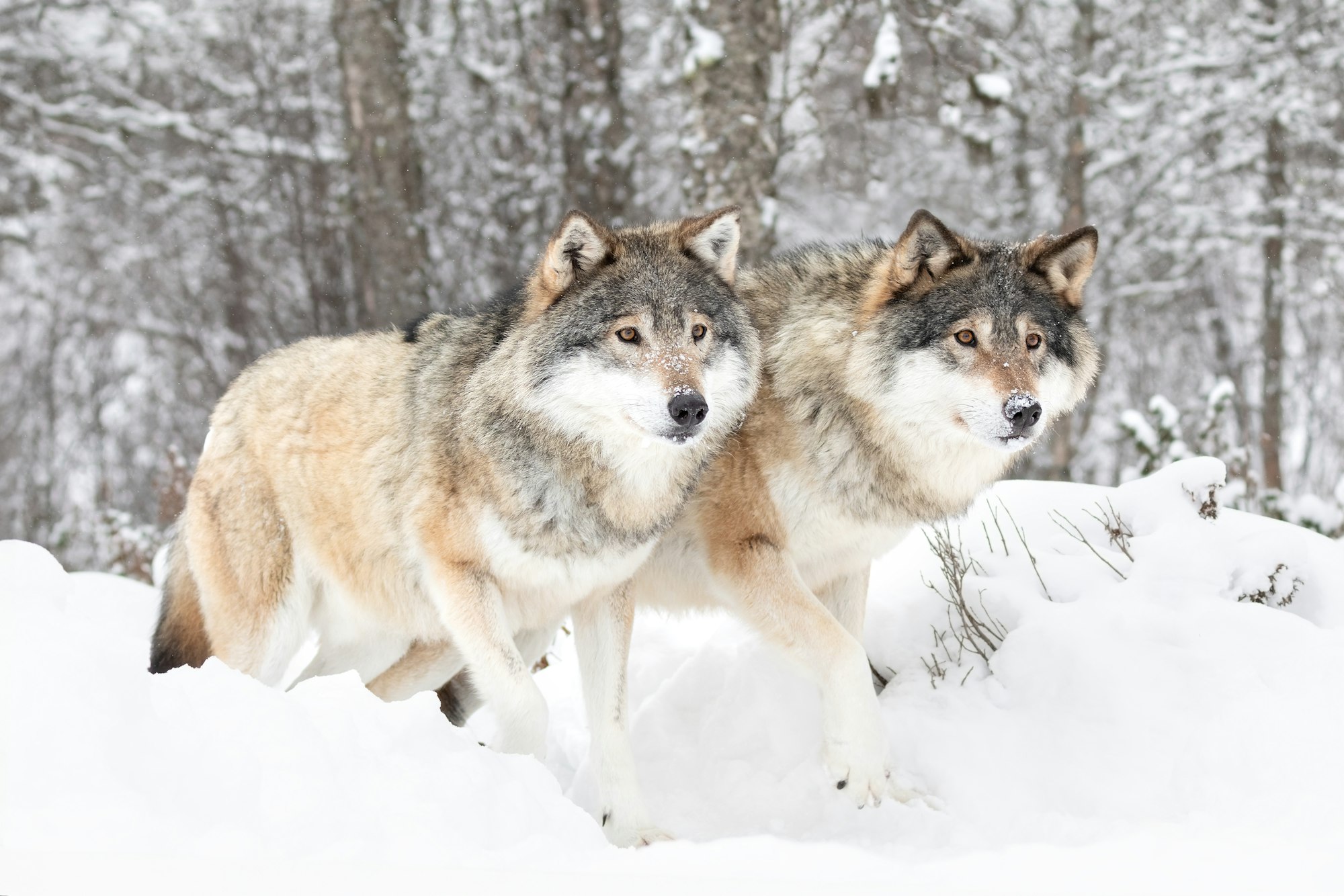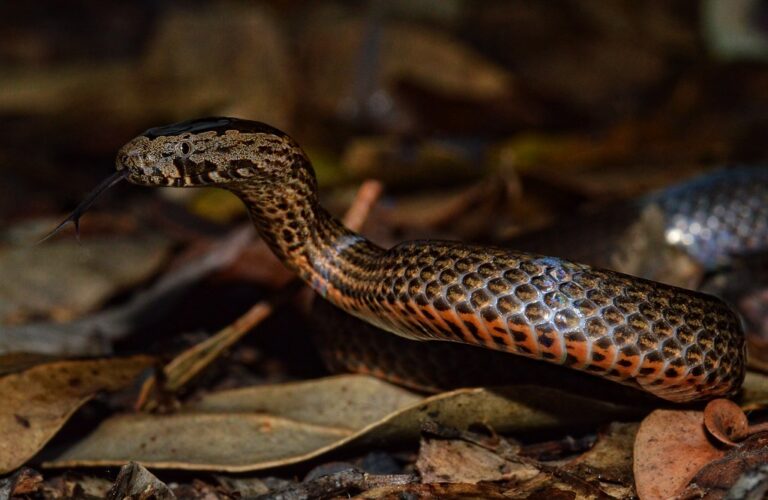The pictures we use in our articles might not show exactly what the words say. We choose these pictures to make you interested in reading more. The pictures work together with the words but don’t take their place. The words still tell you the important facts.
Have you ever wondered about the mysterious and captivating world of grey wolves? These remarkable creatures have fascinated humans for centuries, and it's no wonder why. From their intelligence and adaptability to their complex social structures, grey wolves are truly one of nature's most impressive predators. In this blog post, we'll dive into some fascinating facts about these amazing animals that will leave you in awe of their incredible abilities and importance in the natural world.
The Social Life of Grey Wolves
One of the most intriguing aspects of grey wolves is their highly developed social structure. These animals are far more than just pack hunters; they form intricate family units that work together for the good of the group.
- Pack Dynamics: A typical wolf pack consists of a mated pair (the alpha male and female) and their offspring from previous years. This family unit usually has 5-8 members, but some packs can grow much larger, with up to 42 wolves recorded in exceptional cases!
- Communication is Key: Wolves use a variety of methods to communicate within their pack and with other wolves. From their famous howls (which can be heard up to 10 miles away!) to body language and scent marking, these animals have developed a complex system of interaction.
Did you know that wolves howl for various reasons? They may howl to assemble the pack before and after hunts, to pass on alarms, or to locate each other during storms or in unfamiliar territory. It's not just about howling at the moon – that's actually a myth!
The Wolf’s Role in the Ecosystem

Grey wolves play a crucial role in maintaining the balance of their ecosystems. As apex predators, they help control populations of other animals and contribute to the overall health of their habitats.
Keystone Species: Wolves are often referred to as a "keystone species" because of their significant impact on their environment. By controlling populations of large herbivores like elk and deer, wolves help prevent overgrazing and allow vegetation to thrive. This, in turn, provides habitat for countless other species.
In Yellowstone National Park, the reintroduction of wolves in the 1990s led to a cascade of positive changes in the ecosystem. The presence of wolves altered the behavior of elk, allowing vegetation to recover along rivers and streams. This created habitats for beavers, songbirds, and other wildlife, demonstrating the far-reaching effects of these incredible predators.
Physical Adaptations for Survival
Grey wolves have evolved numerous physical adaptations that make them highly effective predators and allow them to thrive in a variety of habitats.
- Built for Endurance: Wolves have long legs and large paw pads, which enable them to travel great distances in search of prey. They can cover up to 30 miles in a single day!
- Powerful Senses: A wolf's sense of smell is estimated to be 100 times more powerful than a human's. This keen sense helps them locate prey, identify other wolves, and navigate their territory.
One of the most impressive features of grey wolves is their bite force. With a bite force quotient (BFQ) of 136, wolves have one of the strongest bites relative to their size among carnivores. This powerful jaw allows them to take down prey much larger than themselves and crush bones to access nutritious marrow.
The Intelligence of Grey Wolves
Grey wolves are renowned for their intelligence, which plays a crucial role in their survival and hunting success. These clever canines exhibit problem-solving abilities, strategic hunting tactics, and advanced social behaviors that showcase their cognitive prowess.
Cooperative Hunting: Wolves work together to bring down prey that would be impossible for a single wolf to tackle alone. They use sophisticated strategies, such as having some pack members chase the prey while others lie in wait to ambush it. This level of coordination requires not only intelligence but also trust and communication among pack members.
Adaptability: Wolves have shown remarkable adaptability in the face of human encroachment on their habitats. They've learned to navigate human-dominated landscapes, adjust their hunting techniques, and even modify their diets when necessary. This flexibility is a testament to their problem-solving abilities and cognitive flexibility.
Wolf Conservation: Challenges and Successes
The history of grey wolves and humans has been a complex and often contentious one. For centuries, wolves were persecuted and hunted to near-extinction in many parts of their range. However, conservation efforts in recent decades have led to some remarkable comebacks.
Recovery in North America: In the United States, wolf populations have rebounded in several areas thanks to legal protections and reintroduction efforts. The successful reintroduction of wolves to Yellowstone National Park in the 1990s is a prime example of how these animals can recover when given the chance.
Challenges in Europe: European wolves face different challenges, with habitat fragmentation and conflicts with livestock being major issues. However, many European countries now have laws protecting wolves, and their numbers are slowly increasing in some areas.
Despite these successes, wolf conservation remains a complex issue. Balancing the needs of wolves with those of humans, particularly in areas where wolves and livestock overlap, continues to be a challenge for conservationists and policymakers.
Myths and Misconceptions About Grey Wolves
Throughout history, wolves have been the subject of many myths and misconceptions. Let's debunk some of the most common ones:
- Wolves are bloodthirsty killers: In reality, wolves are simply predators trying to survive. They don't kill for sport, and they play a vital role in maintaining healthy ecosystems.
- Wolves howl at the moon: While wolves do howl at night when the moon is visible, they're not actually howling at the moon itself. They howl to communicate with their pack members and mark their territory.
- Wolves are a serious threat to humans: Attacks on humans by healthy, wild wolves are extremely rare. Wolves generally avoid human contact whenever possible.
- Lone wolves are the norm: While some wolves do leave their packs to find new territories or mates, most wolves live in family groups for most of their lives.
By dispelling these myths, we can foster a better understanding and appreciation for these remarkable animals.
The Future of Grey Wolves
As we look to the future, the fate of grey wolves remains uncertain in many parts of the world. Climate change, habitat loss, and human-wildlife conflict continue to pose significant challenges to wolf populations. However, there is also reason for hope.
Increased Understanding: As we learn more about the crucial role wolves play in ecosystems, public attitudes towards these animals are slowly changing. Education and outreach efforts are helping to foster a greater appreciation for wolves and their importance.
Coexistence Strategies: Researchers and conservationists are developing innovative strategies to help humans and wolves coexist. These include non-lethal deterrents to protect livestock, wildlife corridors to allow wolves to move safely between habitats, and community-based conservation programs.
Rewilding Initiatives: In some areas, there are efforts to reintroduce wolves to their former habitats. These "rewilding" projects aim to restore natural processes and improve overall ecosystem health.
Conclusion: The Enduring Legacy of Grey Wolves
From their complex social structures to their crucial role in ecosystems, grey wolves continue to captivate our imagination and play a vital part in the natural world. As we've explored in this post, these remarkable animals are far more than the villains of folklore – they're intelligent, social creatures with a fascinating array of behaviors and adaptations.
By learning more about grey wolves, we can appreciate their importance and work towards ensuring their survival for future generations. Whether it's supporting conservation efforts, educating others about the truth behind wolf myths, or simply marveling at the beauty and complexity of these animals, we all have a role to play in shaping the future of grey wolves.
As we continue to study and understand these magnificent predators, one thing is clear: the world would be a far less rich and balanced place without grey wolves. Let's work together to ensure these incredible animals continue to thrive in the wild, howling their haunting songs across the landscapes they call home.






